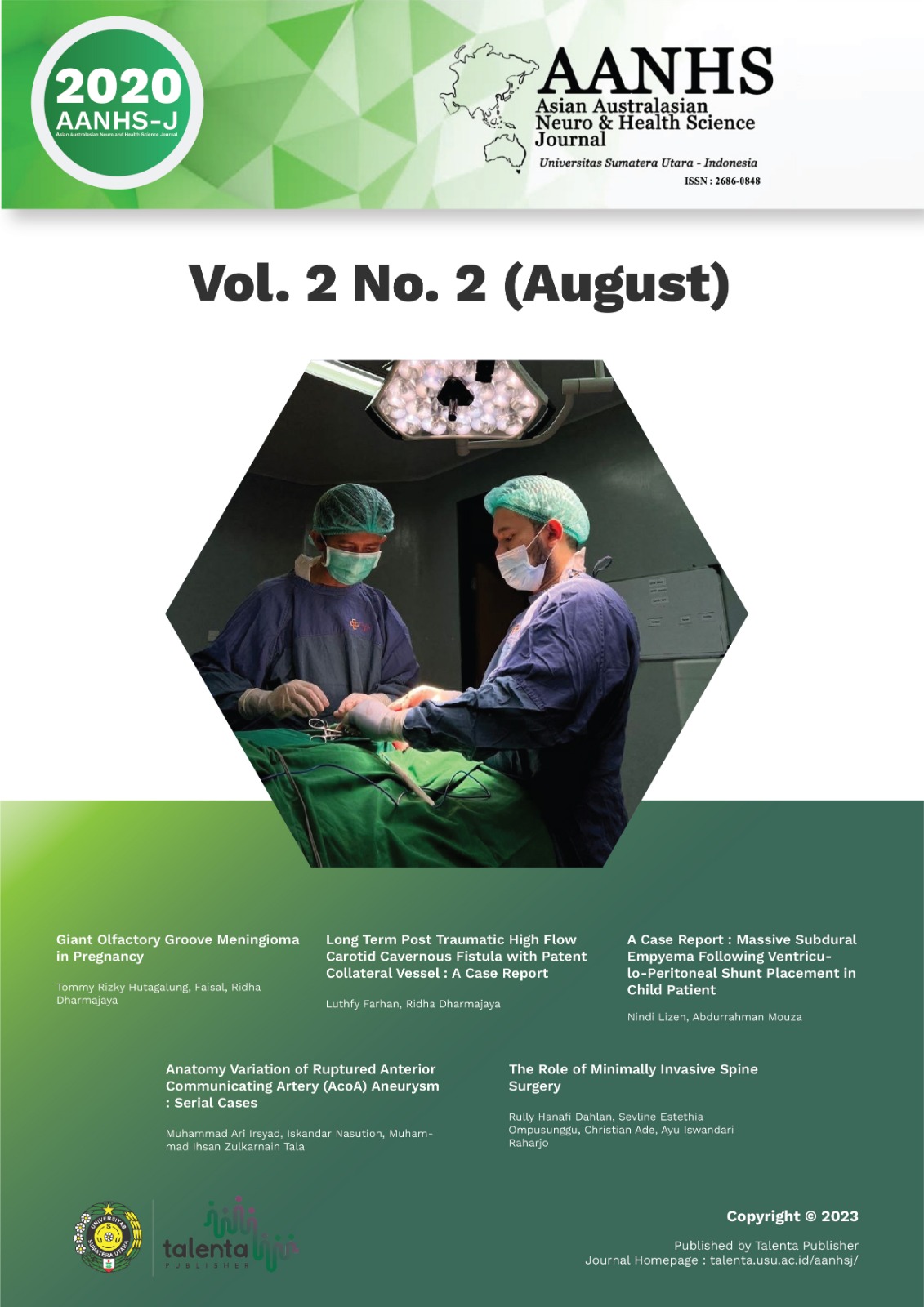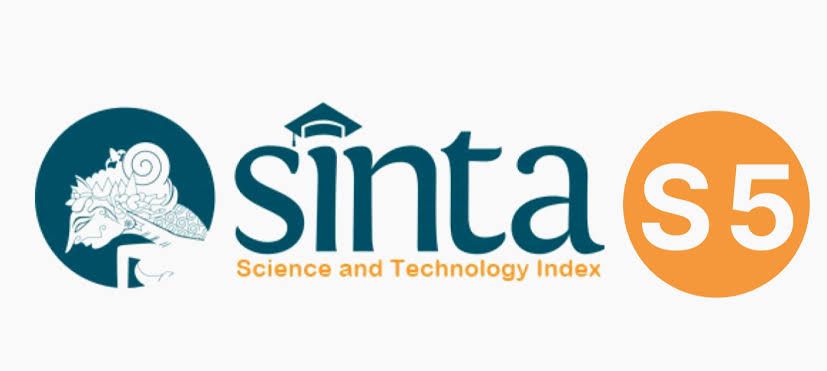The Role of Minimally Invasive Spine Surgery
DOI:
https://doi.org/10.32734/aanhsj.v2i2.1043Abstract
Introduction :In the past half of century, the spinal surgery techniques has advanced significantly. Along with the improvement and various of techniques and technologies in general, there has been a big movement to reduce the morbidity of surgery.
Case review : As opposed to open spine surgery, minimally invasive surgical approaches can be faster, safer and require less recovery time. The minimally invasive spine surgery also need to make an efficient target of surgery. The roots in minimally invasive spine surgery (MISS) are based primarily on technique modifications.
Discussion: The Williams microdiscectomy, described in 1978, revolutionized MISS by starting the evolution of lumbar discectomy from an open surgery through a 6-inch incision to a microsurgical approach through as small an opening as possible.
Conclusion :We don’t use the MISS technique when the extension of tumor is more than 2 levels; extension of the tumor is 20% longer than diameter of largest retractor; the tumor > 3cm for interlaminary approach, the wide durotomy is needed; and also the case with intramedullary tumor with 80% extention, from left to the right side; en bloc as the the goal of surgery for extradural tumor
Downloads
Downloads
Published
How to Cite
Issue
Section
License
Copyright (c) 2020 Asian Australasian Neuro and Health Science Journal (AANHS-J)

This work is licensed under a Creative Commons Attribution-NonCommercial-NoDerivatives 4.0 International License.
The Authors submitting a manuscript do understand that if the manuscript was accepted for publication, the copyright of the article shall be assigned to AANHS Journal.
The copyright encompasses exclusive rights to reproduce and deliver the article in all forms and media. The reproduction of any part of this journal, its storage in databases and its transmission by any form or media will be allowed only with a written permission from Asian Australasian Neuro and Health Science Journal (AANHSJ).
The Copyright Transfer Form can be downloaded here.
The Copyright form should be signed originally and sent to the Editorial Office in the form of original mail or scanned document.














